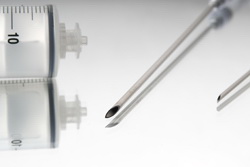Drug therapies target cell membrane components
Membrane proteins play an inestimable role in most intercellular signalling pathways. They act as receptors of biochemicals from other cells and from the intercellular fluid. They also form channels that allow large molecules to pass into or out of the cells. Some are enzymes that function in biochemical reactions. Lipid-binding proteins (proteins that bind to lipids in the phospholipid cell membrane) are a particular target for drug therapies. Membrane recruitment of peripheral proteins is mediated by one or more lipid-binding regions through recognition of specific lipids. However, the actual mechanisms are largely unknown. European researchers sought to apply cutting-edge nuclear magnetic resonance (NMR) imaging in order to provide new insight into this important class of membrane proteins. The ‘Phospholipid and glycolipid recognition, interactions and structures by magnetic resonance’ (PRISM) project was established in response to this initiative. PRISM brought together leading experts in the fields of membrane biology and biochemistry with NMR spectroscopists. In order to speed the transition of innovation from workbench to industry, an external advisory group was included. It consisted of small and medium-sized enterprise (SME) directors and industry representatives as well as technology transfer offices of academic research institutes. The PRISM project developed novel experimental tools for membrane protein analysis elucidating structures and dynamics of membrane proteins. Software tools enabled prediction of membrane protein assembly structures and lipid binding sites by illuminating protein-lipid interactions at the atomic level.Along the way, the PRISM project resulted in four patents, over 50 publications and more than 100 conference presentations. Project results have the potential for significant impact on targeted drug therapies acting at protein-lipid interfaces and thus could provide an important boost to European pharmaceutical and biotechnology sectors.







